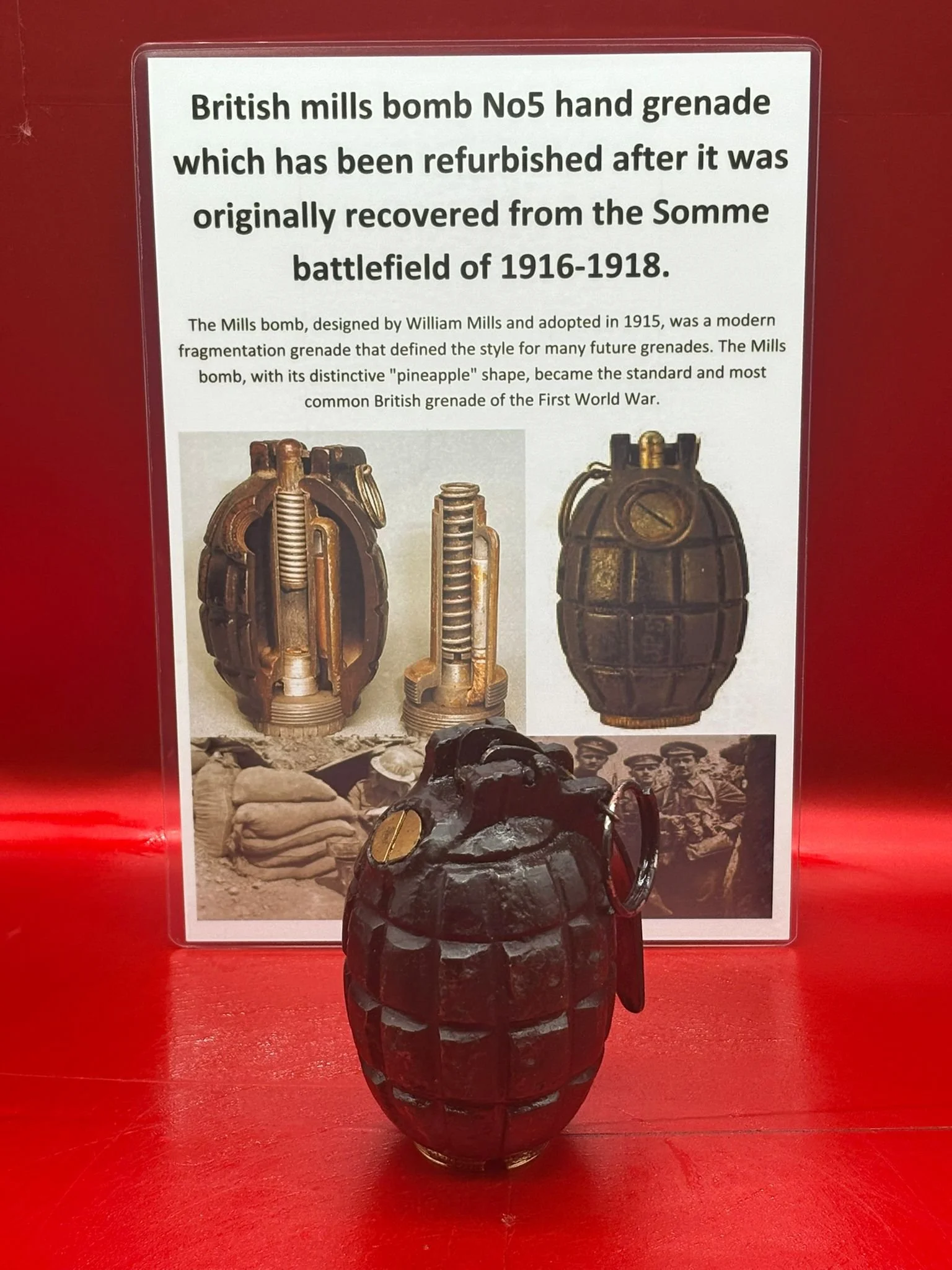 Image 1 of 11
Image 1 of 11

 Image 2 of 11
Image 2 of 11

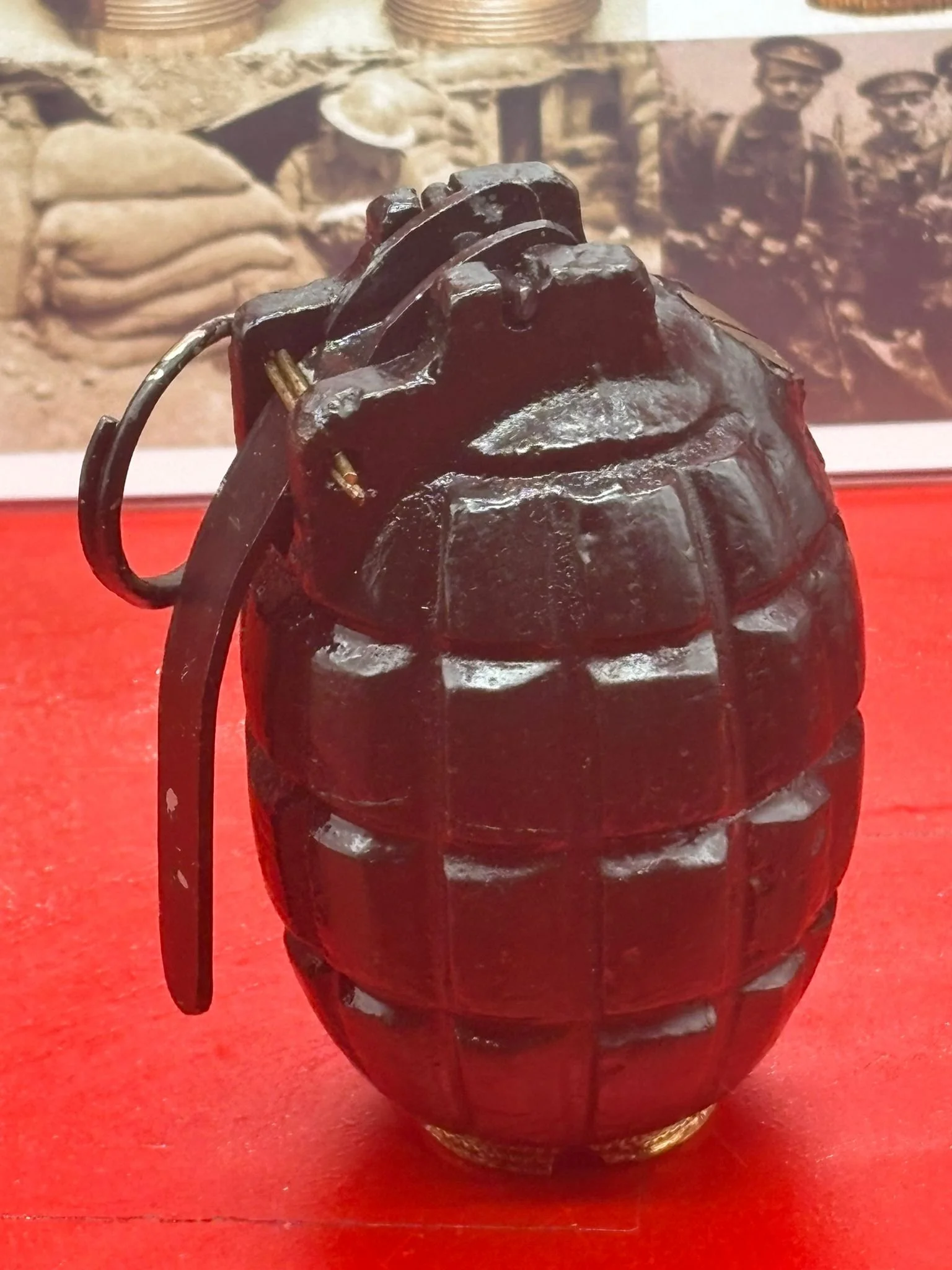 Image 3 of 11
Image 3 of 11

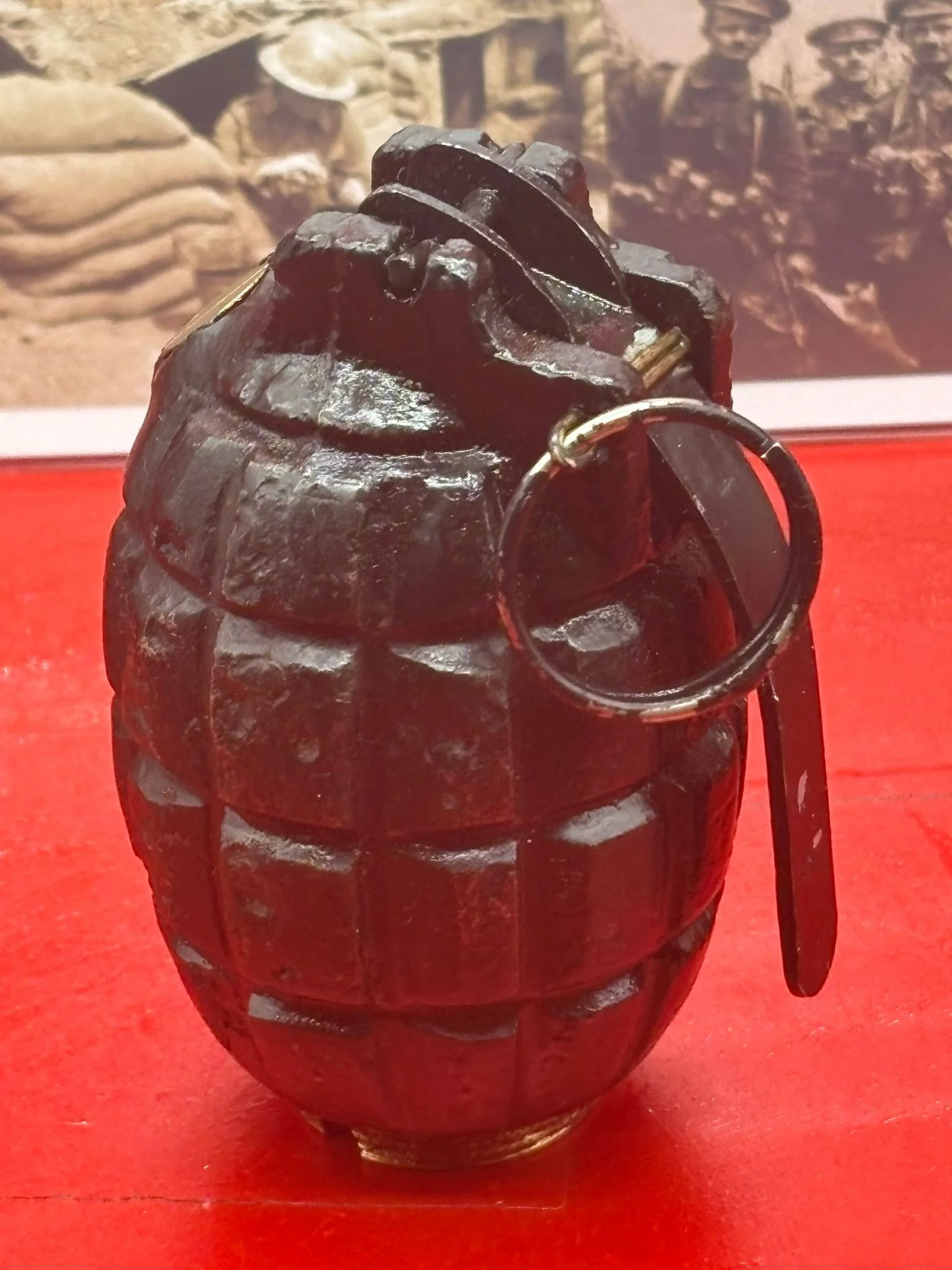 Image 4 of 11
Image 4 of 11

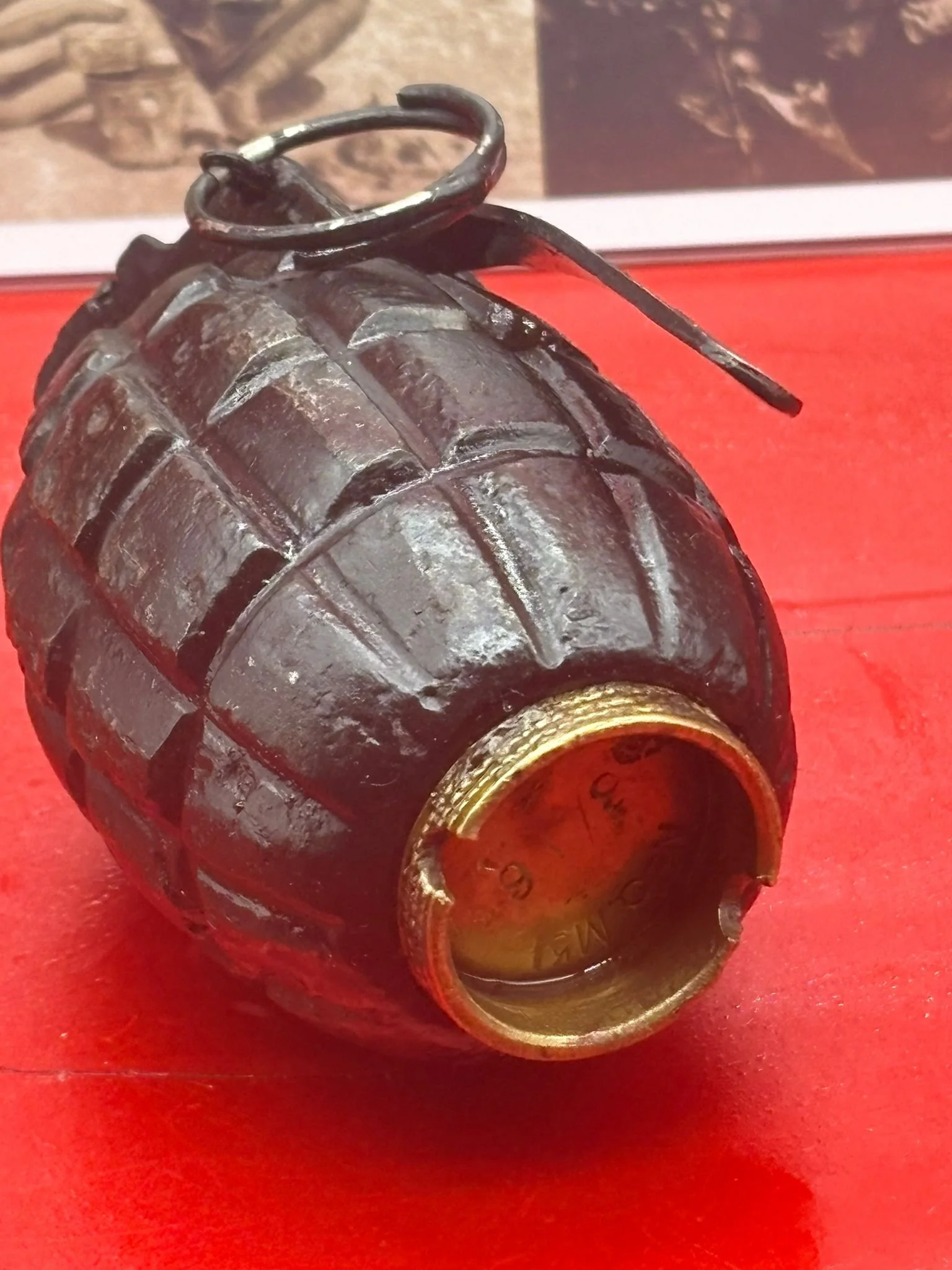 Image 5 of 11
Image 5 of 11

 Image 6 of 11
Image 6 of 11

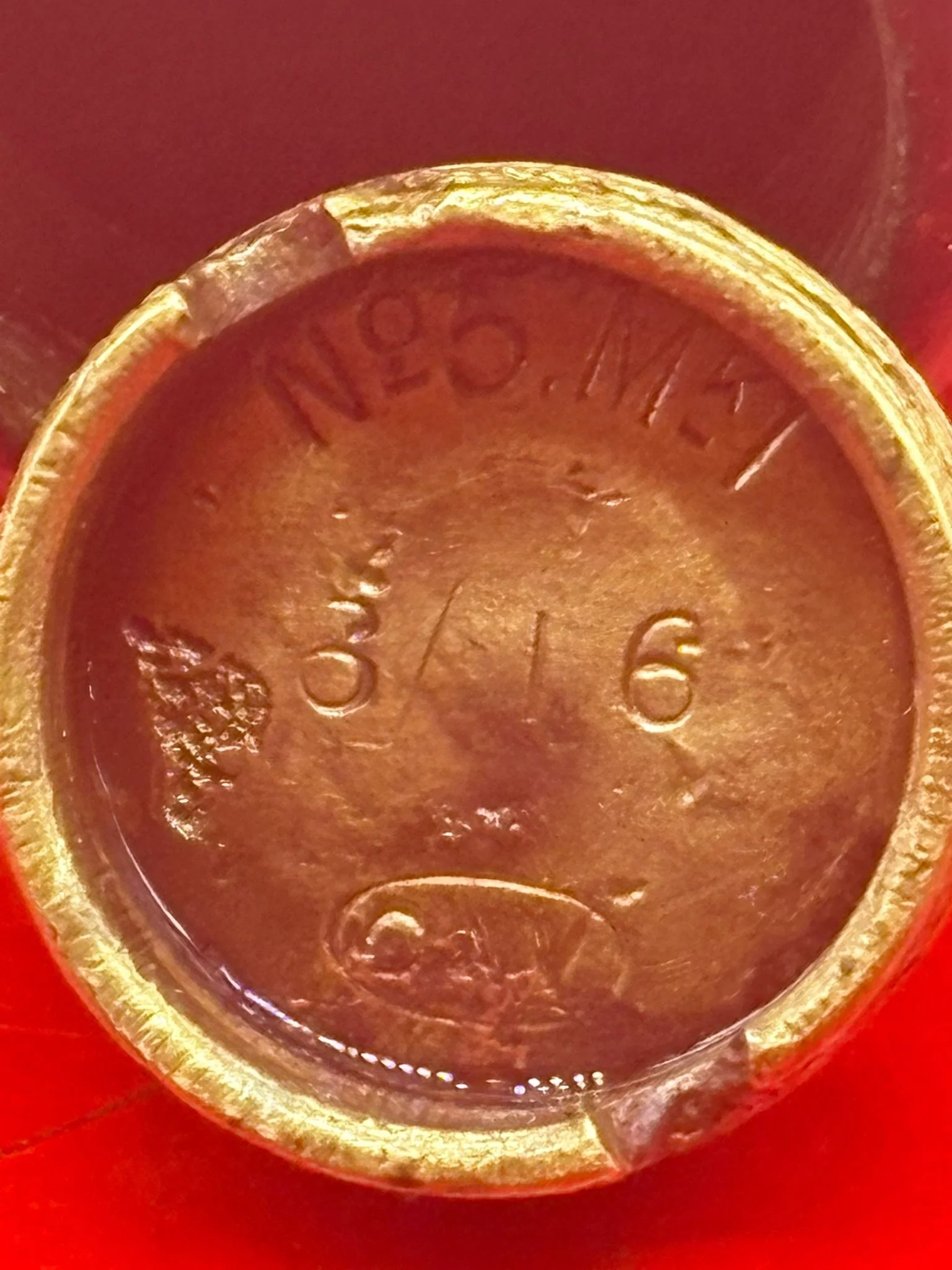 Image 7 of 11
Image 7 of 11

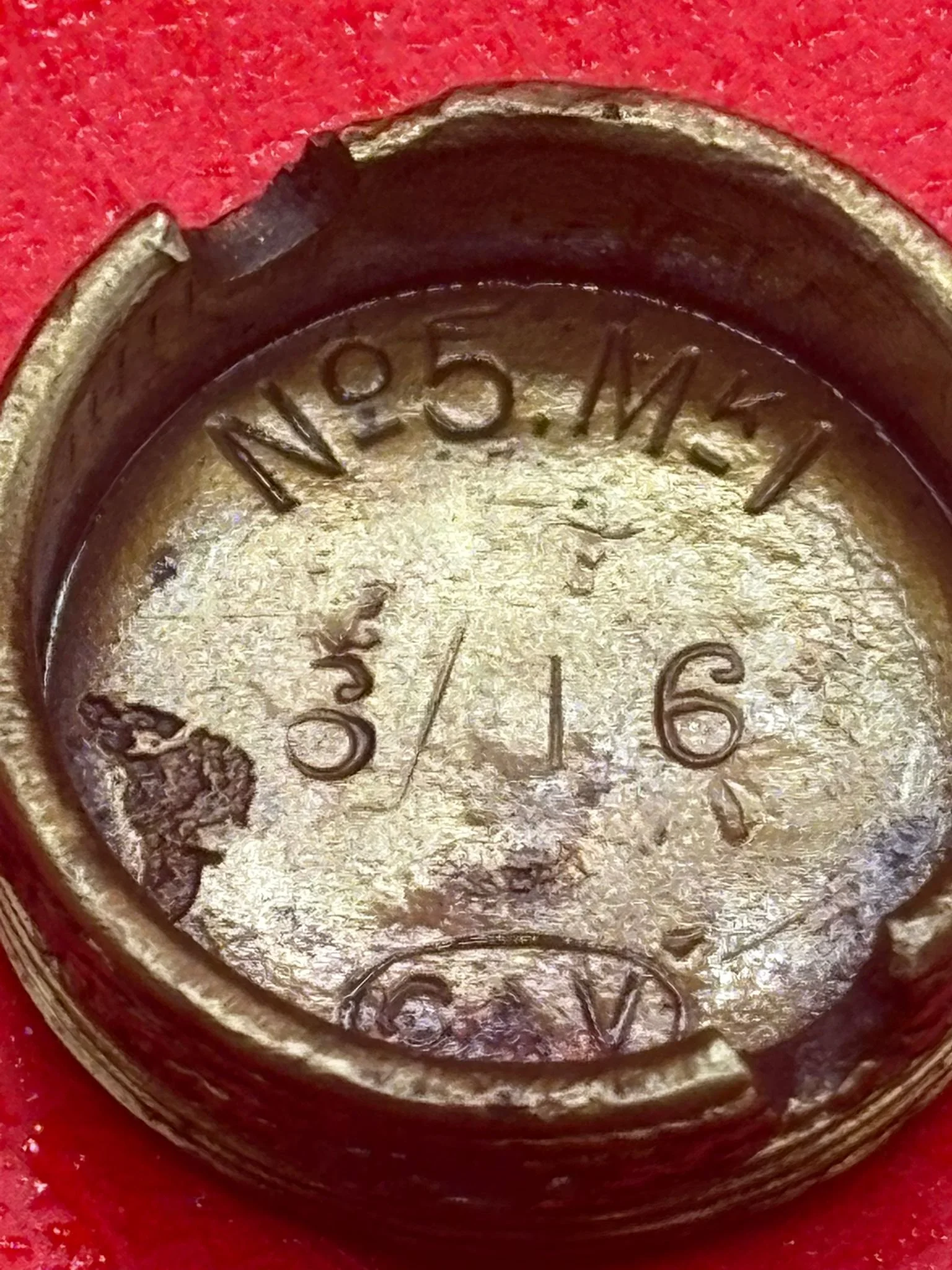 Image 8 of 11
Image 8 of 11

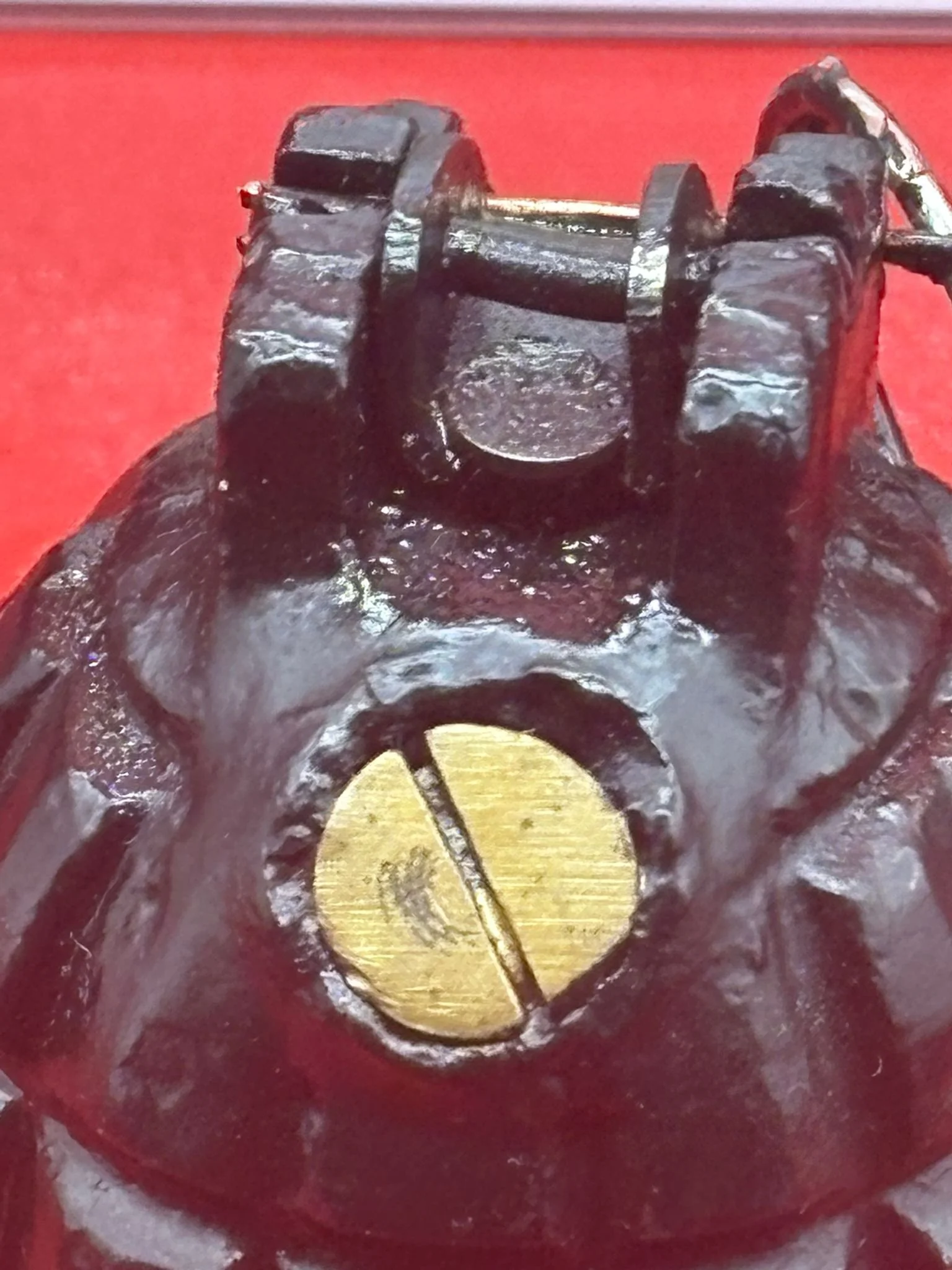 Image 9 of 11
Image 9 of 11

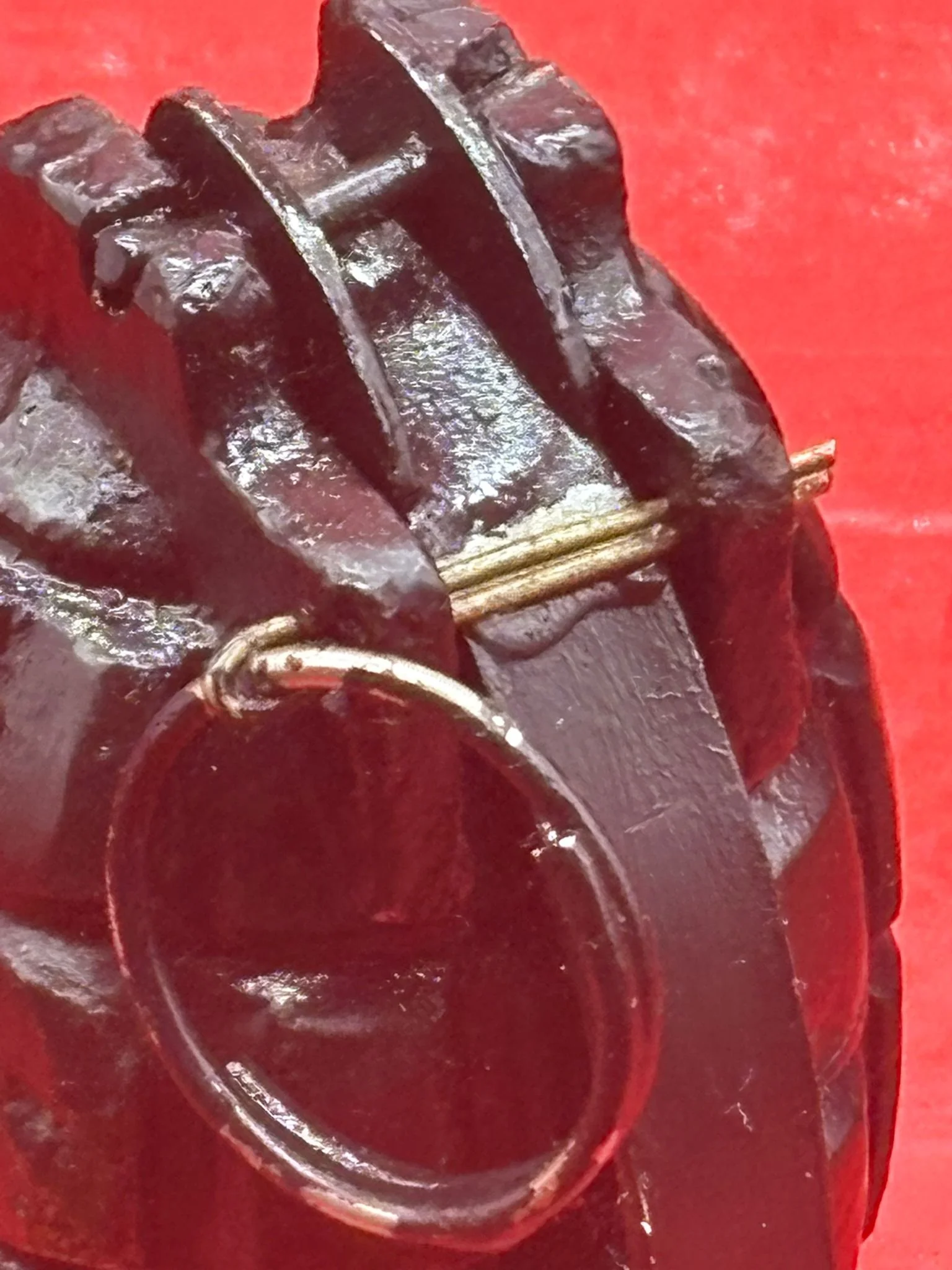 Image 10 of 11
Image 10 of 11

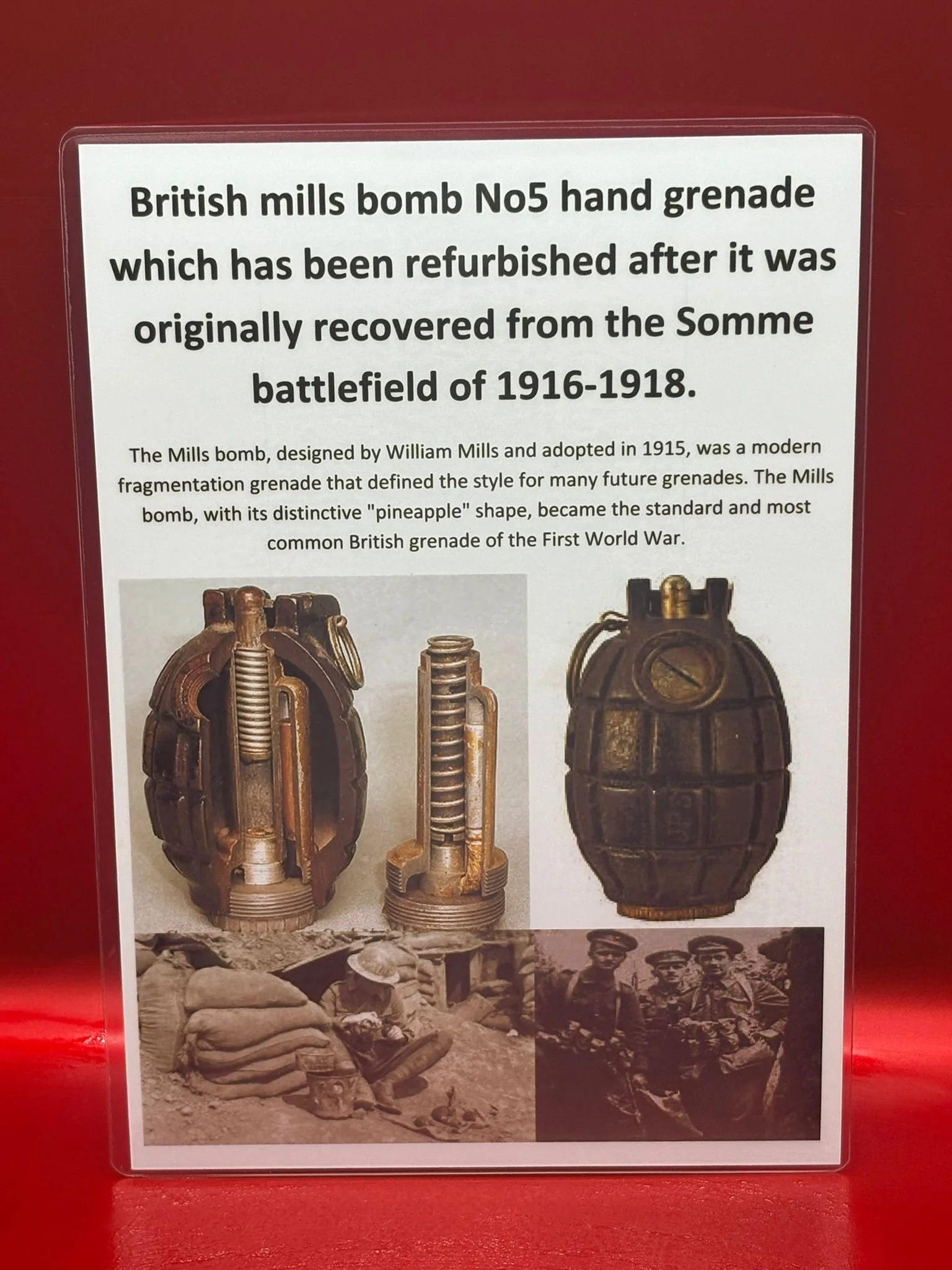 Image 11 of 11
Image 11 of 11












Fantastic condition refurbished British mills bomb No5 hand grenade dated 1916 recovered many years ago from the famous Somme battlefield of 1916-1918
This is a rare fantastic condition refurbished which is British mills bomb No5 hand grenade totally complete with all its internal parts. This is the outer casing only which is empty and inert the metal case has no holes only some light pitting and has been re painted in what looks like it could be the original black paintwork finish.The grenade is complete with its pin, leaver and its No5 brass base plate which is maker marked and dated June 1916 it is perfect condition for display or any collection. A very nice and not easy to find British grenade from the famous Somme battlefield of 1916-1918 and comes with a A5 laminated information card.
The Mills bomb, designed by William Mills and adopted in 1915, was a modern fragmentation grenade that defined the style for many future grenades. The Mills bomb, with its distinctive "pineapple" shape, became the standard and most common British grenade of the First World War.
This is a rare fantastic condition refurbished which is British mills bomb No5 hand grenade totally complete with all its internal parts. This is the outer casing only which is empty and inert the metal case has no holes only some light pitting and has been re painted in what looks like it could be the original black paintwork finish.The grenade is complete with its pin, leaver and its No5 brass base plate which is maker marked and dated June 1916 it is perfect condition for display or any collection. A very nice and not easy to find British grenade from the famous Somme battlefield of 1916-1918 and comes with a A5 laminated information card.
The Mills bomb, designed by William Mills and adopted in 1915, was a modern fragmentation grenade that defined the style for many future grenades. The Mills bomb, with its distinctive "pineapple" shape, became the standard and most common British grenade of the First World War.
